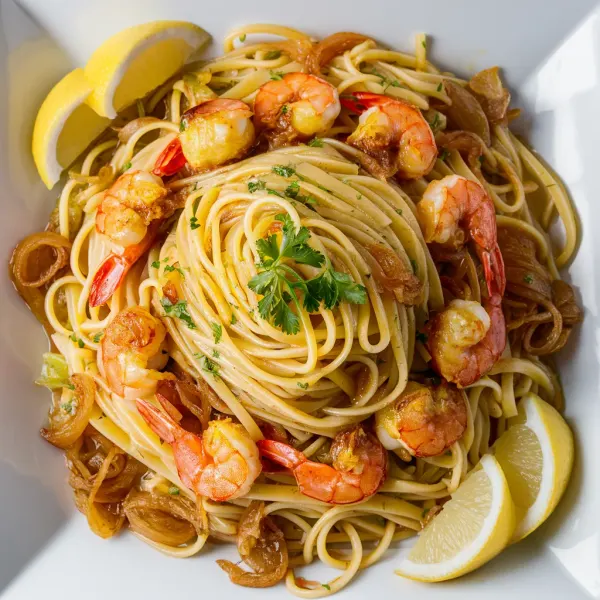
 30 minutes
30 minutesA fresh and vibrant take on classic spaghetti carbonara, featuring seasonal vegetables and a hint of citrus.


tablespoons
teaspoons
0 oz
Snow Peas, julienned lengthwise
0 lb
Peas, shelled
cups
Asparagus, bottom third discarded and tips sliced in 2-inch pieces
0 lb
tablespoons
Pancetta, small-diced
0 oz
cups
each
Extra-Large Egg Yolks
each
Italian Parmesan Cheese
cups
Scallions, white and green parts, thinly sliced diagonally
each
Chives, minced
cups
Lemon, zest and juice
each
1. Cook the pasta
Begin by bringing a large pot of salted water to a rolling boil. Add a generous amount of salt, about 2 tablespoons, as this helps season the pasta from the inside out. Once the water is boiling, add the 12 ounces of spaghetti and cook it for about 8 minutes until it is al dente—firm to the bite but cooked through. This ensures the pasta will absorb the sauce well later.
2. Prepare the vegetables
While the pasta is cooking, prepare the vegetables. Add the julienned snow peas, fresh peas, and sliced asparagus to the pot during the last 2 minutes of the pasta's cooking time. This quick blanching keeps the vegetables vibrant and crisp. Drain the pasta and vegetables together in a colander, reserving 1 cup of the pasta water for the sauce.
3. Cook the pancetta
In a medium sauté pan, heat 2 tablespoons of olive oil over medium heat. Add the diced pancetta and cook it until it is browned and crispy, about 7 to 9 minutes. This renders the fat, which will add a depth of flavor to the dish.
4. Prepare the sauce
To prepare the sauce, fill a large bowl with hot tap water to warm it. Empty the bowl before use. In this warm bowl, whisk together ½ cup of heavy cream, 2 extra-large eggs, 2 extra-large egg yolks, and ¼ cup of the reserved pasta water. The warmth of the bowl helps to prevent the eggs from scrambling when you add the hot pasta.
5. Combine pasta and sauce
Add the hot pasta and vegetables to the bowl with the sauce. Toss everything together for 1 to 2 minutes until the pasta is glossy and evenly coated. The heat from the pasta will cook the eggs gently, creating a creamy sauce without curdling.
6. Fold in cheese and seasonings
Next, fold in the freshly grated Parmesan cheese, sliced scallions, minced chives, and the zest and juice of one lemon. Season generously with salt and freshly ground black pepper to taste. The combination of these ingredients will give your carbonara a fresh, vibrant flavor with a hint of citrus.
7. Add pancetta and serve
Finally, add the cooked pancetta to the pasta, tossing to combine. Serve the carbonara immediately, garnishing with extra Parmesan and a sprinkling of fresh chives for an added touch of freshness.
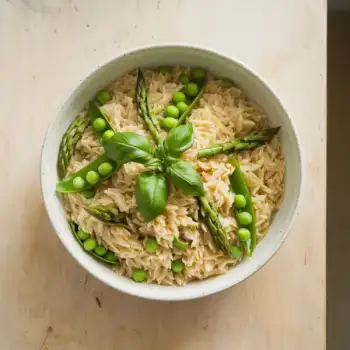
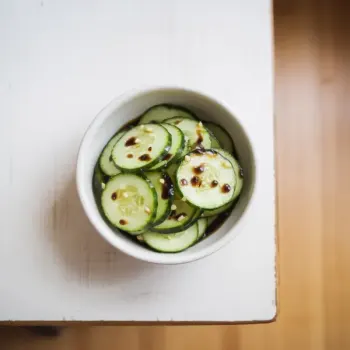
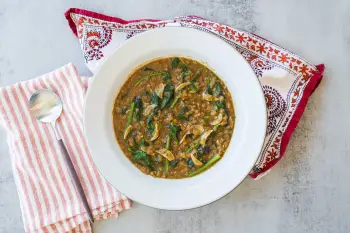
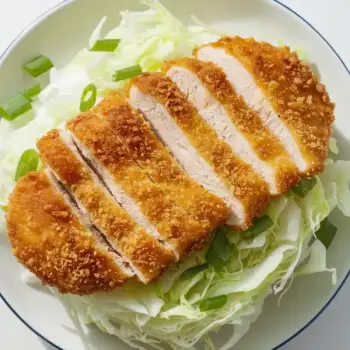
Comments (0)